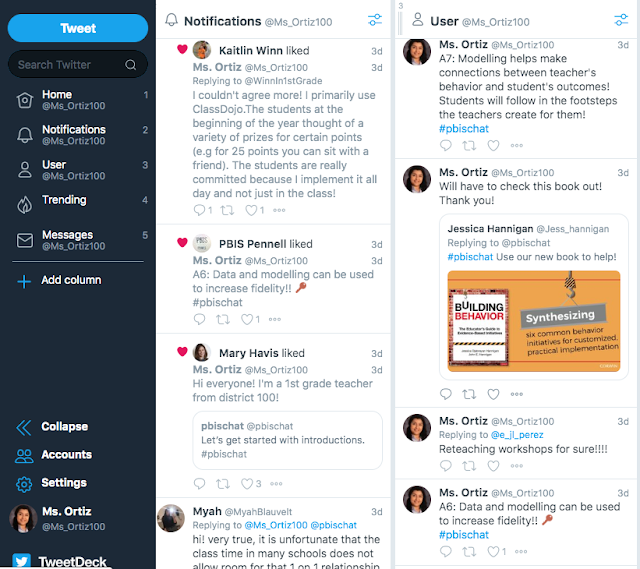Personal Learning Networks!
Let's Tweet About It!
 |
| via GIPHY.com |
Twitter has been around since 2006. However, with technology becoming more common in today's society, it is very likely many individuals have it downloaded on their phone ready to be accessed with a simple tap!
As an educator in my district, it was recommended to create a Twitter account to find resources, share our classroom life, and stay connected with other educators across the world! Prior to creating my educator account, I also had a personal account where I shared my student teaching experience and life throughout college. Twitter can be used to tweet opinions, share ideas, provide feedback- the options are endless! With professional learning networks, or PLNs people are able to collaborate within one another and share ideas on a certain topic. Throughout my time researching, I came across Dori Digenti's article, Collaborative Learning: A Core Capability for Organizations in the New Economy. In this article, she says,
"The PLN consists of relationships between individuals where the goal is enhancement of mutual learning. The currency of the PLN is learning in the form of feedback, insights, documentation, new contacts, or new business opportunities. It is based on reciprocity and a level of trust that each party is actively seeking value-added information for the other." (Digenti, 1999)
Although this article was published over fifteen years ago, I believe this definition of PLNs still holds to be true. There are so many forums and chats to join not only on Twitter, but on the web!
My experience
Topic of Tuesday night's PLN: "Coasting into Fall? How to Avoid or Address a PBIS Implementation Dip"
Q1: High fidelity implementation of PBIS is key to maximize positive S outcomes. Describe ways you keep momentum through long school months heading into long breaks?
Q2: What are some challenges you face that could lead to an implementation dip?
Q3: A principal recently said the Ts were experiencing implementation fatigue. What does this mean to you and what can be done about it?
Q4: How do you use self-reflection/assessments and other fidelity tools/checklists to remind Ts of essential components to measure quality of implementation?
Q5: How can Ss take an active role in improving implementation fidelity?
Q6: If fidelity is below 80% what strategies can be used to increase fidelity?
Q7: Empowering staff leads to high fidelity – how do you help make connections between T behavior and S outcomes?
Q8: There is a link between T approval/buy in (social validity) and treatment integrity (fidelity). How do you gather and respond to teacher feedback?
The twitter chat I joined was #pbischat. Above, you can view the topic of discussion as well as each question our chat discussed. I thought this chat was beneficial to join because our school implements PBIS. Below you can view a screenshot of my engagement throughout the #PBISchat. Within my time tweeting, I bounced off ideas with other teachers out of state on apps to use and implement in the classroom for reward systems. I mentioned and tweeted to them that in my classroom, I primarily use ClassDojo. Once a week, the students are able to redeem their points on certain prizes (prize box, sit with a friend, etc.) I make sure to be consistent with ClassDojo in and outside the classroom so the students can ensure they are working towards their goal. This is critical not to experience an implementation dip because if you are not consistent or the goal is too high, students lose interest. Overall, I gained insight about PBIS implementation dips and not to mention increased my number of followers!
Educational Resources
Towards the end of our #pbischat, it was time to share resources we might find useful to use in our day-to-day teaching. Within reading the live feed, I came across Jessica Hannigan's Twitter account. She shared her new book, Building Behavior: The Educator's Guide to Evidence-Based Initiatives. This is a good resource to look into because my school implements Positive Behavior Interventions and Supports (PBIS). Our school's mascot is a Tiger, so our staff passes out Tiger tickets to students who are being responsible, respectful, safe, and kind (The school's behavior expectations). These tiger tickets can then be saved and collected to be redeemed at the Tiger store which is set up monthly by our awesome PTA parents! This is just one example of initiatives our school implements to ensure our students are following the school's behavior expectations. I hope to get my hands on this book soon and read about different initiatives to build positive behavior in my classroom, but also around the school.
 |
| via @Jess_hannigan |


Comments
Post a Comment